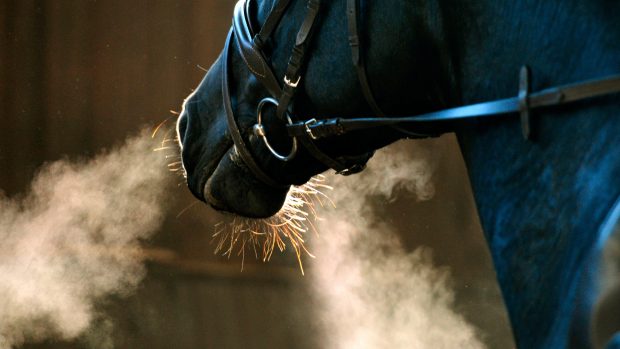Respiratory disorders are common in horses, especially at this time of year when increasing numbers of horses are spending a larger proportion of their time indoors.
The most common respiratory condition suffered by adult horses in the UK is recurrent airway obstruction (RAO) which is also refered to as chronic obstructive pulmonary disease (COPD), ‘broken wind’, emphysema or heaves.
RAO facts
- Recurrent airway obstruction (RAO) is an allergic condition.
- RAO sufferers are usually allergic to mould spores in their environment.
- Affected horses should be kept in minimum-dust conditions.
- Drugs may help RAO, but are no substitute for good management.
- Your vet can advise you on minimum-dust management and whether drug therapy is necessary for your horse.
Creating a healthier environment
Hay is a major source of mould allergen and even the best hay contains sufficient spores to induce clinical signs of RAO in affected animals. Ideally, RAO sufferers should be fed mould-free haylage-type products.
If hay has to be fed, it should be thoroughly soaked prior to feeding so as to remove as many mould spores as possible. While it has been shown that soaking hay reduces its nutritive value, in most cases this is not a vital issue – RAO-affected horses are far more likely to be overweight than underweight.
Bedding is a prime source of mould in the stable environment. The best solution is to have no bedding at all, and use rubber matting instead. Stables with rubber matting must be well drained to avoid pooling of urine.
If you use conventional bedding, try mould-free products such as shredded paper or cardboard, bearing in mind that these materials must be well mucked out or they become as mouldy as the worst straw beds.
Mould from other stables or nearby hay and straw stores can be a source of contamination. As a result, the horse’s entire environment must be considered when formulating a minimum-dust policy.
Your vet is the best person to advise you on this and other aspects of minimum-dust management.
| For more information on RAO, see the December issue of HORSE magazine, out on Thursday 14 November, which comes with a free guide to making the most out of the winter months with your horse.
Click here to subscribe to HORSE magazine, which is packed with horsecare features every month |



